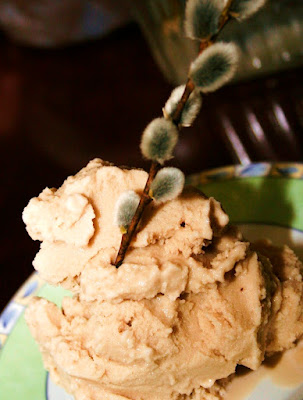
One characteristic feature in Finnish cuisine is soups. They aren't just appetizers or snacks but quite often very filling main courses of the day. And all the cooks in the world know that the secret of a good soup is the broth, which is why they keep their special stock recipes secret. You should always have couple of different kinds of them available cause otherwies all your foods start to taste the same. Cooking a stock is all very easy but if you make a larger portion at once it quickens things up for busy days.
Some general guidelines:
1. Making a stock is a perfect way to recycle all the vegetable leftovers like peels and heads. If you use whole vegetables wash them normally and remove the clearly rotten parts but don't bother to peel. Remember you're not going to eat them.
2. Try to add something from all the basic tastes (except fat which has also got into this category lately): bitter, salty, sour, sweet and savory (aka umami).
3. Keep fat out of this since it doesn't store well. You can always add margarine or cream to the soup itself to make it richer.
4. Many alcohol drinks like wines or brandies fit this purpose well. But as much as I love beer this isn't the place for it since it turns bitter when boiled (as I learned when trying to make beer soup).
5. Don't exaggerate with any of the ingredients. If you want your broth to taste like white wine add white wine to the broth itself. Try to keep the stock well balanced and multifunctional.
6. Frying the veggies isn't necessary but it adds to the taste. The one you shouldn't fry is garlic since it may turn bitter.
7. If you for some weird reason want to clarify the stock use for example a clay called bentonite which is widely sold for winemaking.
8. When you're using the stock remember to let it come to a boil to get the taste out of it.
9. How much you should use the stock at once depends on your personal likings, the amount of other spices you're going to use and the denseness of your stock (aka how tighly you concentrate it). It may just as well be 2-3 ice cubes or 1 dl at a time.
Just to show you a couple of examples, here are the recipes for three stocks I've made so far. Next time I might try for example yeast pate (for example Tartex), cider, laurel, lovage, juniper berries or birch sap. Perhaps even a hint of strong tastes like salmiakki (Ammonium chloride), tar or horseradish might work.
Hearty stock:
- 0.5 rutabaga plus the skin and the head of the other half
- skins and heads of 500 g carrots
- skins and heads of 500 g beets
- 1 onion
- 1/2 garlic
- 1 punch of dill
- 8 whole black peppers
- 0.5 dl dark syrup
- 0.5 dl miso (dissolved in water)
- 0.5 dl apple wine vinegar (more aromatic than apple
cider vinegar)
- 1 tsp monosodium glutamate
- 1 tsp salt
Zesty stock:
- leftovers from 1 white cabbage
- leftovers from 1 cauliflower
- cores and peels of 3 apples
- 1 sheet of algae (nori)
- 2 tsp dried yarrow flowers
- 2 dl white wine
- 0.5 dl lemon juice
- 0.5 dl mustard powder (Remember mustard condiment also contains oil and sugar.)
- 1 tbsp brown sugar
- 1 tsp monosodium glutamate
- 1 tsp salt
Spicy stock:
- 1 leek
- 500 g tomatoes
- 1 bell pepper
- 1 chili pepper
- all the dried herbs I had in the closet but couldn't recognize anymore
- 2 dl red wine
- 0.5 dl mämmi
- 0.5 dl sea buckthorn juice
- 1 tsp monosodium glutamate
- 1 tsp salt
Chop and fry the veggies on a dry pan. Put them in a cattle with the rest of the ingredients and 1.5 litres of water. Let them simmer without a lid. The stock is ready when at least half of the liquid has vaporized and the veggies have turned mashy (after approximitely two hours). Filter the stock, pour it into an ice cube tray (if you've saved plastic soy yoghurt cups or such they're also ideal for this) and freeze. The part that didn't fit there stores a few days in the fridge.
 It may be a bit too late for this recipe but at least it's now here for the next May Day. Besides, I imagine this would taste great in the summer when rhubarbs actually grow here. And I've heard that garden angelica also makes a good mead.
It may be a bit too late for this recipe but at least it's now here for the next May Day. Besides, I imagine this would taste great in the summer when rhubarbs actually grow here. And I've heard that garden angelica also makes a good mead.















